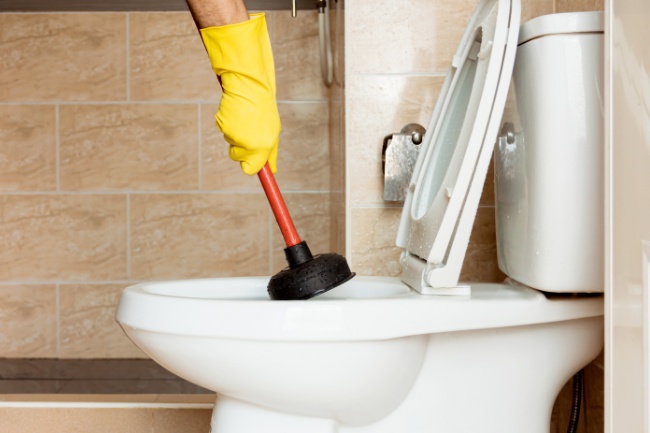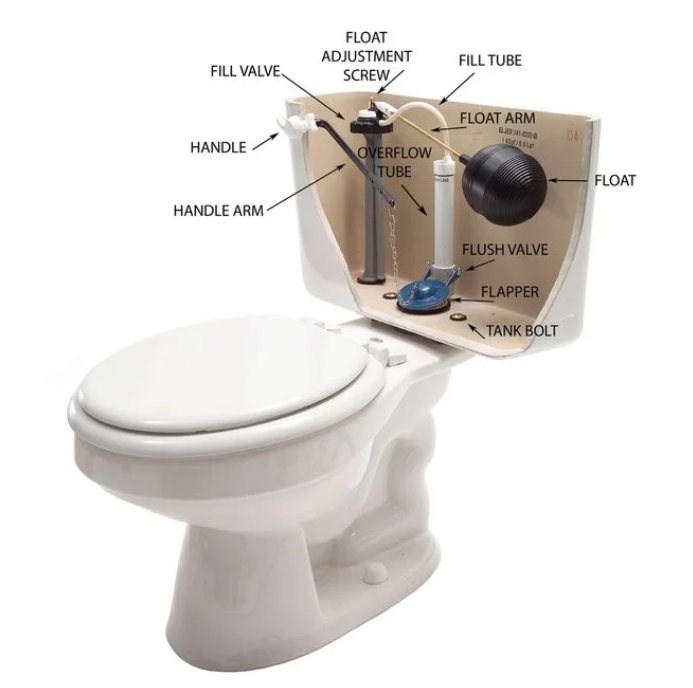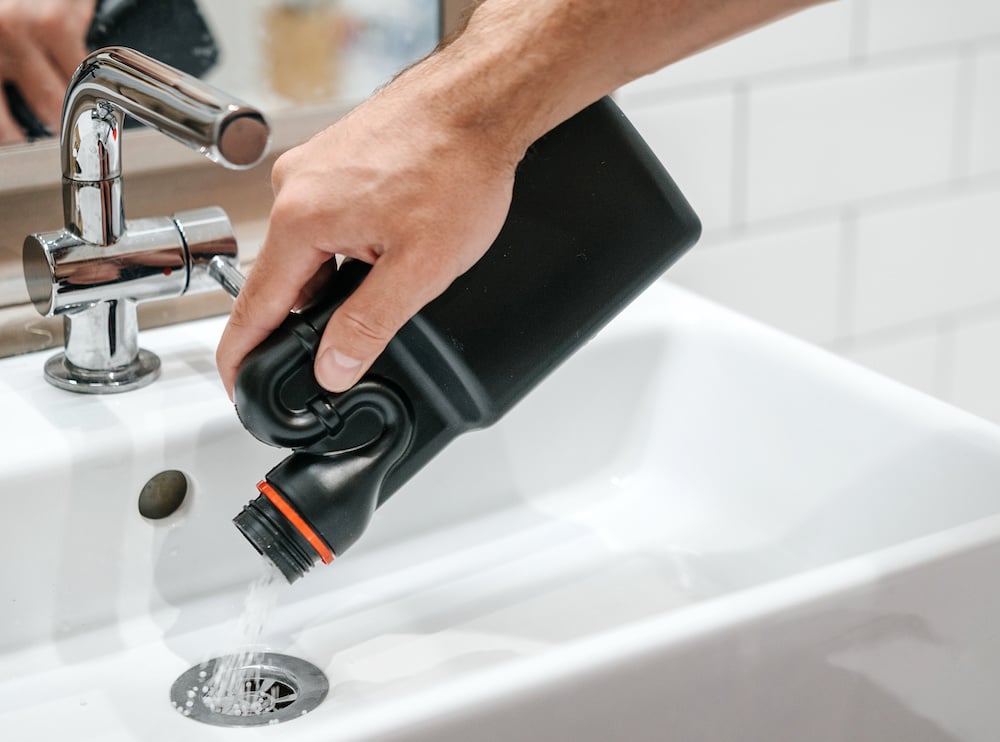6 Tricks About Drain Cleaning You’ll Wish You Knew Before
Posted by William Heinselman on

Chemical concentrations, food product buildup and grease accumulation are the most common causes of drain clogs in private homes. At their worst, these clogs require professional cleaning, or even repairs, which may not be possible given certain budgets or plumbing systems.
In the best-case scenario, however, you may be able to eliminate these clogs with several at-home methods and tools, before the need to contact a professional plumber ever arises. In this blog, we’ve compiled 6 of the most effective, DIY drain cleaning techniques homeowners can use to mitigate the effects of clogs, and return their drain pipes to top performance.
Hot Water Could Do the Trick
Often overlooked due to its simplicity, sometimes a simple hot water cleanse could be all your clogged or dirty drains need to return to peak performance. Flushing your drain pipes with hot water can often dislodge clogged materials and buildup gunk, through a simple combination of water pressure, force and heat.
For the best results, try running hot water through your clogged or dirty drains for about 15 minutes. If all goes accordingly, the bare heat and force of the water will dislodge any buildups affecting your drain, and return your pipes to optimal working condition at no cost to you. As this flush requires nothing other than a working faucet, it’s the simplest potential drain cleaning techniques you can do.
Use Tools You Already Have
Other simple techniques you may not have considered for cleaning your drains can be done with tools you already own; before going out and purchasing DIY drain cleaning tools, or calling a professional plumber to assess your drains, try using these tools to perform easy, quick drain pipe fixes.
Your plunger; the bathroom plunger you already own may be the perfect solution for your clogged or poorly performing drains. Even more effective for sink drains are specialized sink plungers, which feature optimized designs ideal for sink applications.
Whichever plunger you have on hand, the technique for clearing a drain is essentially the same: just cover the entire drain opening with the plunger, and press back and forth in a continuous, fluid motion for about 1 to 2 minutes. Don’t jam the plunger down with excess force or speed. It’s the steady buildup of pressure from fluid motions that can remove significant pipe clogging.
Also, if the fixture in question is equipped with an overflow vent (such as those on most conventional sinks, which prevent overflows), be sure to cover these vents beforehand; otherwise, all the air and pressure you force into the drain will escape, rendering your efforts meaningless.
One way to get the best seal over a drain opening is by applying petroleum jelly to the rim of the plunger; this jelly temporarily seals your plunger to the fixture, preventing an air from escaping.
Homemade Liquid Cleaners
When the above techniques are impractical, or otherwise don’t work in your unique situation, you may want to try clearing your drains with homemade mixture solutions. Like commercial, chemical cleaners, these solutions can break down and dislodge any drain pipe buildup affecting your pipes; however, unlike commercial cleaners, these solutions do not come with the risk of pipe damage or deterioration after extended use.
The most common of these at-home mixtures is a simple vinegar and baking soda concoction; these products, which you may already have in your home pantry, react when combined to break down loose materials within pipes, and have no effects on the structure of the surrounding pipe walls.
Pour one cup of each down your drain pipes, and follow it after a short, 3 to 5 minute time-span with boiling water. If all goes well, this drain cleaning technique will remove any clogging in your drains, for a fraction of the price and danger risk of commercial chemical cleaners.
Use a Drain Snake for DIY Plumbing Service
One tool you may not have handy yet, but should if clogged drains or gunk accumulation are a common problem in your home, is a plumber’s drain snake. These tools are what professional plumbers typically use to relieve standard clogs and excavate drain pipes, and can be found at your local home improvement store for an affordable price (roughly $25 to $50) that can return on its investment after a single use.
While you may think these tools can only be properly used by the pros, homeowners have increasingly begun using snaking techniques to clear their own drains. DIY drain snaking techniques are as simple as 1-2-3:
- Begin by feeding the snake through your drain pipes, turning the handle clockwise until you encounter resistance
- Rotate the snake against the blockage, so the snake latches onto the clogged materials
- Pull the snake from your drain slowly, removing the clogged material, and reassemble your drain cover
Just like that, your drains clog problems can be entirely eliminated without the need to contact a professional for help.
Sugared Sodas and Drain Clogs
This drain cleaning trick is often overlooked just for its strangeness; but it’s so unconventional, it just happens to work. Soft drinks and sugary sodas, such as Pepsi and Coca-Cola products, can resolve common drain clogs much like the homemade solutions featured previously in this blog.
Significantly safer than commercial drain cleaners, like the baking soda and vinegar solutions, soda applications can break through clogged debris thanks to the dissolving agents included in these sodas; most notably, phosphoric acid. These agents, surprisingly, may even be more effective than chemical, commercial cleaners. It just goes to show, when it comes to effective drain cleaning, sometimes the unconventional solutions are the best ones out there.
Prevention Tips to Keep Your Drain Running Well
As you may expect, one of the best ways to eliminate the problems drain clogs cause is by avoiding clogging altogether. Here at Express Sewer & Drain, we suggest performing monthly performance checks on your drains, and having a professional plumbing inspection at least once per year. By taking proactive measures, you can limit these clogs altogether, or catch them in their early stages before they develop into more severe and costly problems.
Beyond regular self- and professional inspections, simply knowing what your drains can and cannot process is one of the best ways to limit clogging. Avoid putting stringy, fibrous foods through your drains and garbage disposal, as well as food wrappers, animal bones, paper products and kitchen grease; these are the most common clog-causing agents.
By taking advantage of these simple drain cleaning tips, and performing regular checks to limit clog developments, you can greatly improve your home’s plumbing performance. To learn more about what you can do today to eliminate the risk of severe drain clogging, or if DIY drain renovations are a practical choice in your situation, contact us today.
Topics: Commercial Plumbing, Home Plumbing, Drain Cleaning and Repair






